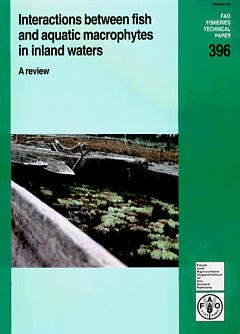Description
Interactions between fish and aquatic macrophytes in inland waters
A review
FAO Fisheries technical paper Series, Vol. 396
Language: English
Subjects for Interactions between fish and aquatic macrophytes in...:
Publication date: 01-2000
194 p. · Paperback
194 p. · Paperback
Description
/li>
For a fishery manager it is important to understand the role of aquatic macrophytes in inland waters, as this will assist in adjusting strategies for optimizing capture fisheries. Fish, crayfish, some mammals and birds and some other organisms use macrophytes to their benefit, such as spawning, nursery, feeding grounds and as a refuge. Macrophytes play an important role in the fish food chain, especially as a substrate for aquatic organisms on which the fish feed. Aquatic plants have a controlling effect on prey-predator interrelationships, have an important function in water quality and, hence, can be used in biomanipulation for improving fish stocks. Special plant communities, such as floating meadows of varzea and igapo, are essential for fish and fisheries in the Amazon basin, while sudd formation may lead to the reduction in fish stocks. The present review has been compiled in response to requests for an update on such interactions, and aims to assist policy planners, managers, field specialists, and other persons interested in this topic.
© 2024 LAVOISIER S.A.S.
These books may interest you

Fish Pheromones and Related Cues 215.59 €


